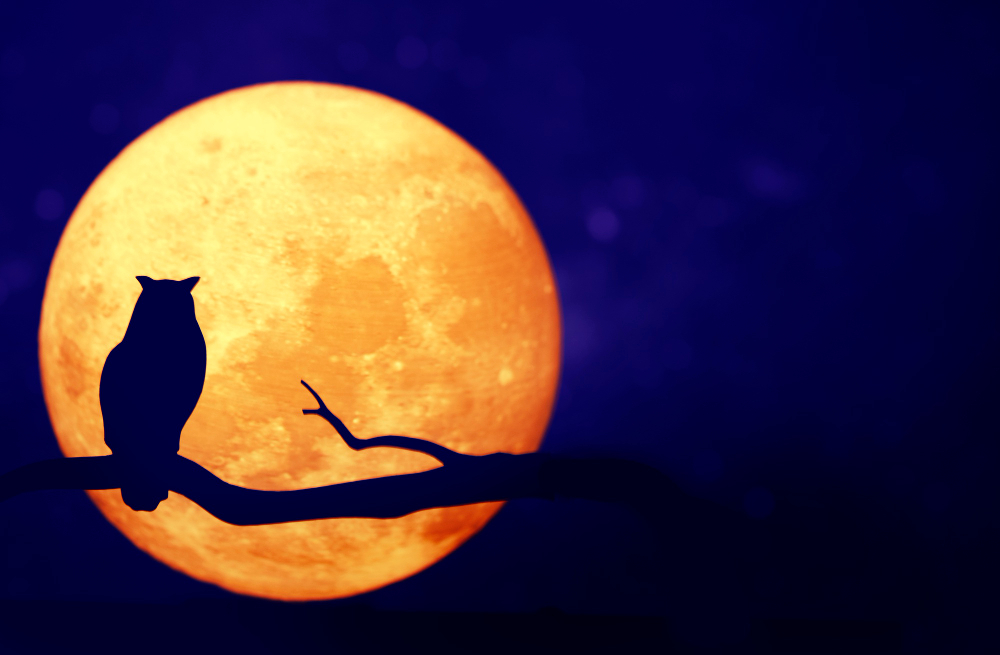As the sun sets and darkness descends, a hidden world awakens. The realm of nocturnal animals is filled with mystery, intrigue, and remarkable adaptations that allow them to thrive in the cover of night. While many animals are active during the day, there is a diverse array of species that have evolved to navigate and conquer the challenges of the nocturnal landscape. In this article, we delve into the captivating world of nocturnal creatures, exploring their fascinating adaptations and the unique strategies they employ to survive and thrive in the darkness.
Owls: Masters of Silent Flight and Precise Predation
Owls are iconic nocturnal predators renowned for their ability to fly silently and hunt with exceptional precision. Their wings are specially designed to minimize noise, allowing them to approach their prey undetected. This remarkable adaptation is due to the comb-like fringes on their flight feathers, which break up the turbulence and reduce noise during flight. Additionally, owls have incredible hearing capabilities, with asymmetrical ear placements that enable them to pinpoint the exact location of their prey based on sound alone. Their exceptional vision, characterized by large forward-facing eyes and an abundance of light-sensitive cells, further enhances their hunting prowess in low-light conditions. Owls truly embody the stealth and grace of the night.
Bats: Masters of Echolocation and Aerial Acrobatics
Bats are fascinating nocturnal creatures that have mastered the art of echolocation. Using high-pitched sounds that bounce off objects in their environment, bats can create detailed mental maps of their surroundings, allowing them to navigate and locate prey with astonishing accuracy. This unique adaptation enables them to fly and forage in complete darkness. Bats also possess remarkable maneuverability, employing agile flight patterns and impressive aerial acrobatics to capture insects mid-air. Some bats even have adaptations like elongated fingers and specialized wings that allow them to catch prey in flight or navigate through dense vegetation. With their extraordinary echolocation abilities and aerial prowess, bats are true masters of the nocturnal skies.
Fennec Foxes: Surviving in Desert Darkness
Fennec foxes are enchanting nocturnal creatures that inhabit the arid regions of North Africa. These small foxes have evolved remarkable adaptations to thrive in their harsh desert environment. Their most distinctive feature is their large ears, which serve multiple purposes. The oversized ears help dissipate heat and regulate body temperature in the scorching desert, while also enhancing their hearing abilities, allowing them to detect prey and potential predators in the quiet of the night. Fennec foxes also have fur on the soles of their feet, which protects them from the hot desert sand. Their keen senses and specialized adaptations enable them to navigate the nocturnal desert landscape with ease.
Fireflies: Illuminating the Night with Bioluminescence
Fireflies, also known as lightning bugs, are enchanting insects that light up the night with their bioluminescence. These tiny creatures produce light through a chemical reaction within their bodies, creating a mesmerizing display of flickering lights. Fireflies use their bioluminescence for various purposes, including attracting mates and warning predators of their distastefulness. Each species of firefly has its unique flashing pattern, acting as a form of communication to potential mates. The ability to produce light allows fireflies to find each other in the darkness and participate in their captivating nighttime rituals. Fireflies truly add a touch of magic to the nocturnal world.
Embracing the Nighttime Wonders
The world of nocturnal animals is a captivating realm filled with remarkable adaptations and awe-inspiring strategies for survival. From the silent flight of owls to the aerial acrobatics of bats, and from the desert survival skills of fennec foxes to the mesmerizing bioluminescence of fireflies, each nocturnal creature has its unique place in the intricate tapestry of the night. Exploring the lives of these fascinating creatures not only deepens our understanding of the natural world but also reminds us of the beauty and diversity that exists beyond the daylight hours.
